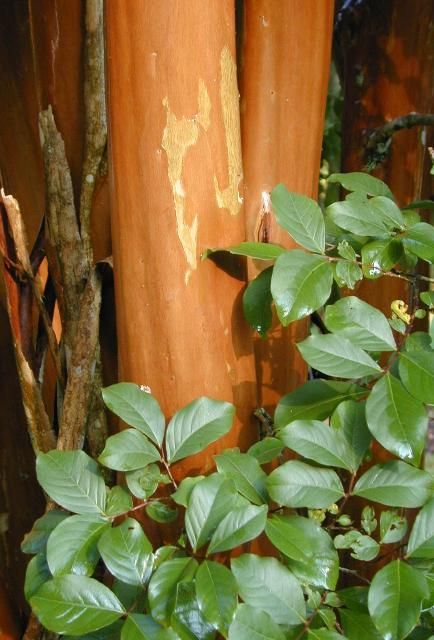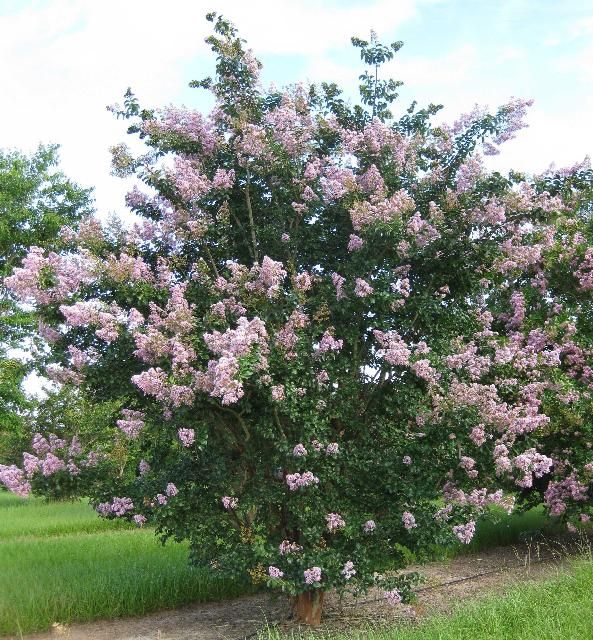Apalachee Crapemyrtle—Lagerstroemia indica × fauriei 'Apalachee'1
'Apalachee' crapemyrtle is a small deciduous tree with lavender flowers, dark green leaves, and cinnamon-orange bark. Lagerstroemia indica x fauriei 'Apalachee' is one of the hybrids released in 1987 from the breeding program of the U.S. National Arboretum. It grows as an upright to vase-shaped multi-stemmed tree in USDA Cold Hardiness Zones 7a-9b.

Credit: Gary Knox
'Apalachee' begins displaying 6–10 inch panicles of light lavender flowers in midseason (July in north Florida) and continues to bloom throughout the summer and autumn. Flowers are lightly fragrant, which is unusual among crapemyrtles. Bark exfoliates in midsummer to expose cinnamon-orange new bark. Foliage may turn orange or dark red before falling in early winter, although fall color is not reliable in Florida.

Credit: Gary Knox
Seed capsules add unexpected winter ornamentation to the leafless branches of the deciduous tree. Because individual flowers are packed tightly in the flower panicle, the seed capsules are closely spaced. These long-lasting seed capsules add interest to the tree's profile, similar to the way dried flowers of oakleaf hydrangea add interest after the flowers have faded.

Credit: Gary Knox
Crapemyrtle grows and flowers best in full sun with rich, moist soil. Crapemyrtle is tolerant of sandy to clayey soils but not wet, saturated soils. It is also drought tolerant once established. 'Apalachee' has good resistance to powdery mildew, very good resistance to Cercospora leaf spot, and moderate resistance to flea beetle (Altica sp.). This hybrid is susceptible to crapemyrtle aphid. 'Apalachee' performs best with minimal pruning. Crapemyrtle is best located away from pavement and structures that may be stained by fallen flowers.

Credit: Gary Knox
'Apalachee' grew to a height of 26 feet and a width of 21 feet in 15 years at former UF/IFAS facilities in Monticello, Florida. It was one of the most outstanding crapemyrtles in that evaluation planting. This crapemyrtle's form, vigorous growth, dark green leaves, lavender flowers, cinnamon-orange bark, and persistent seed capsules give it year-round appeal and allow it to stand out among crapemyrtle cultivars.
Lagerstroemia indica x fauriei 'Apalachee' has not yet been evaluated using the UF/IFAS Assessment of Non-Native Plants in Florida's Natural Areas (http://assessment.ifas.ufl.edu/). Without this assessment, the temporary conclusion is that Lagerstroemia indica x fauriei 'Apalachee' is not a problem species at this time and may be recommended.


